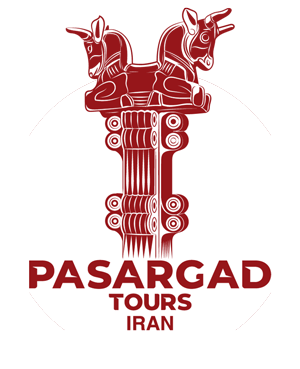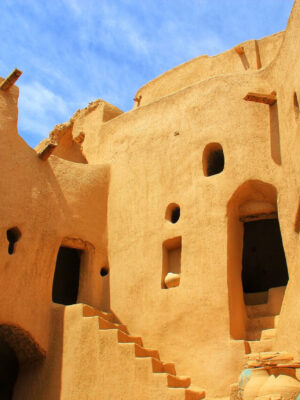Shiraz was known as the “Land of Solomon” as it was also the title of Atabakan Monarchs who ruled Fars province in the 12th and 13th century, but the history of Shiraz dates back to when it was first recorded by the name of Tirazzis on Achaemenid (5th century BC) clay tablets in Elamite language. This ancient settlement which was merely a castle in pre‐Islamic times flourished into a big city in Islamic era and was called the “City of Poetry”. Saadi and Hafez, its famed poets in the 13th and 14th century AD, gained such recognition that Goethe in Germany acknowledged Hafez as the god of all poets.
Shiraz became the capital city of Iran (Persia) in the 18th century AD during the Zand dynasty and its citadels, mosques, bathhouses and bazaars are testaments to the traditions of the people who chose this city as the seat of their government. Carsten Niebuhr, the German explorer who traveled to Iran via the Persian Gulf during that era, described one of the Zurkhanehs (where men perform traditional exercises) in Shiraz: “There is a special place to smoke shisha, where people are served tea and coffee and athletes say prayers after doing sports.”
Shiraz hosts many exquisite Qajar era gardens, palaces, mansions and mosques. Visitors can observe the play of colors and lights at Nasir‐ol‐Molk Mosque. There is also the popular Shah‐Cheragh Shrine, where the 8 th century Shiite Imam’s brother is buried. In this gigantic intermixture of tiles and mirrors, reflecting the time of Safavids in the 17th century, visitors experience a spiritual atmosphere while beholding architectural and artistic beauty. In the late Qajar period, when modernity was gradually entering Iranian cities, British missionaries built Morsalin (Moslemin) Hospital and Brave Simeon Church which are still found in Nobahar Alley known as the Alley of Religions in Shiraz.
Leaving Shiraz, you will set foot on ancient Elamite and Achaemenid road. Anshan, longstanding capital of Elamites is to the northwest of Shiraz; and the Achaemenid capital cities of Pasargadae and Persepolis are to the northeast. Naghsh‐e‐Rostam, lying between Pasargadae and Persepolis, like a beautiful painting carved on rocks, recounts the chronicles of four great dynasties of Elamites, Achaemenids, Parthians and Sassanians. In one of its bas‐reliefs, visitors shall see Valerian of Rome and Sassanian Shapur II and learn about the historic relationship between Iran and Europe.
text in the 1960s, although McClintock says he remembers coming across the lorem ipsum passage in a book of old metal type samples. So far he hasn’t relocated where he once saw the passage, but the popularity of Cicero in the 15th century supports the theory that the filler text has been used for centuries.

Shiraz
Shiraz was known as the “Land of Solomon” as it was also the title of Atabakan Monarchs who ruled Fars province in the 12th and 13th century, but the history of Shiraz dates back to when it was first recorded by the name of Tirazzis on Achaemenid (5th century BC) clay tablets in Elamite language. This ancient settlement which was merely a castle in pre‐Islamic times flourished into a big city in Islamic era and was called the “City of Poetry”. Saadi and Hafez, its famed poets in the 13th and 14th century AD, gained such recognition that Goethe in Germany acknowledged Hafez as the god of all poets.
Shiraz became the capital city of Iran (Persia) in the 18th century AD during the Zand dynasty and its citadels, mosques, bathhouses and bazaars are testaments to the traditions of the people who chose this city as the seat of their government. Carsten Niebuhr, the German explorer who traveled to Iran via the Persian Gulf during that era, described one of the Zurkhanehs (where men perform traditional exercises) in Shiraz: “There is a special place to smoke shisha, where people are served tea and coffee and athletes say prayers after doing sports.”
Shiraz hosts many exquisite Qajar era gardens, palaces, mansions and mosques. Visitors can observe the play of colors and lights at Nasir‐ol‐Molk Mosque. There is also the popular Shah‐Cheragh Shrine, where the 8 th century Shiite Imam’s brother is buried. In this gigantic intermixture of tiles and mirrors, reflecting the time of Safavids in the 17th century, visitors experience a spiritual atmosphere while beholding architectural and artistic beauty. In the late Qajar period, when modernity was gradually entering Iranian cities, British missionaries built Morsalin (Moslemin) Hospital and Brave Simeon Church which are still found in Nobahar Alley known as the Alley of Religions in Shiraz.
Leaving Shiraz, you will set foot on ancient Elamite and Achaemenid road. Anshan, longstanding capital of Elamites is to the northwest of Shiraz; and the Achaemenid capital cities of Pasargadae and Persepolis are to the northeast. Naghsh‐e‐Rostam, lying between Pasargadae and Persepolis, like a beautiful painting carved on rocks, recounts the chronicles of four great dynasties of Elamites, Achaemenids, Parthians and Sassanians. In one of its bas‐reliefs, visitors shall see Valerian of Rome and Sassanian Shapur II and learn about the historic relationship between Iran and Europe.
Shiraz
Shiraz was known as the “Land of Solomon” as it was also the title of Atabakan Monarchs who ruled Fars province in the 12th and 13th century, but the history of Shiraz dates back to when it was first recorded by the name of Tirazzis on Achaemenid (5th century BC) clay tablets in Elamite language. This ancient settlement which was merely a castle in pre‐Islamic times flourished into a big city in Islamic era and was called the “City of Poetry”. Saadi and Hafez, its famed poets in the 13th and 14th century AD, gained such recognition that Goethe in Germany acknowledged Hafez as the god of all poets.
Shiraz became the capital city of Iran (Persia) in the 18th century AD during the Zand dynasty and its citadels, mosques, bathhouses and bazaars are testaments to the traditions of the people who chose this city as the seat of their government. Carsten Niebuhr, the German explorer who traveled to Iran via the Persian Gulf during that era, described one of the Zurkhanehs (where men perform traditional exercises) in Shiraz: “There is a special place to smoke shisha, where people are served tea and coffee and athletes say prayers after doing sports.”
Shiraz hosts many exquisite Qajar era gardens, palaces, mansions and mosques. Visitors can observe the play of colors and lights at Nasir‐ol‐Molk Mosque. There is also the popular Shah‐Cheragh Shrine, where the 8 th century Shiite Imam’s brother is buried. In this gigantic intermixture of tiles and mirrors, reflecting the time of Safavids in the 17th century, visitors experience a spiritual atmosphere while beholding architectural and artistic beauty. In the late Qajar period, when modernity was gradually entering Iranian cities, British missionaries built Morsalin (Moslemin) Hospital and Brave Simeon Church which are still found in Nobahar Alley known as the Alley of Religions in Shiraz.
Leaving Shiraz, you will set foot on ancient Elamite and Achaemenid road. Anshan, longstanding capital of Elamites is to the northwest of Shiraz; and the Achaemenid capital cities of Pasargadae and Persepolis are to the northeast. Naghsh‐e‐Rostam, lying between Pasargadae and Persepolis, like a beautiful painting carved on rocks, recounts the chronicles of four great dynasties of Elamites, Achaemenids, Parthians and Sassanians. In one of its bas‐reliefs, visitors shall see Valerian of Rome and Sassanian Shapur II and learn about the historic relationship between Iran and Europe.
Related Tours
























